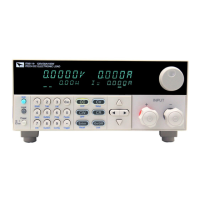Remote Control
Copyright © ITECH Electronic Co., Ltd. 2
Multiple commands in a message
Multiple SCPI commands can be combined and sent as a single
message with one message terminator. There are two important
considerations when sending several commands within a single
message:
⚫ Use a semicolon to separate commands within a message.
⚫ Head paths influence how the instrument interprets commands.
We consider the head path as a string which will be inserted in front of
every command of a message. As for the first command of a message,
the head path is a null string; for each subsequent command, the head
path is a string which is defined to form the current command until and
including the head of the last colon separator. A message with two
combined commands: CURR:LEV 3;PROT:STAT OFF
The example indicates the effect of semicolon and explains the concept
of head path. Since the head path is defined to be "CURR" after "curr: lev
3", the head of the second command, "curr", is deleted and the
instrument explains the second command as: CURR:PROT:STAT OFF
If "curr" is explicitly included in the second command, it is semantically
wrong. Since combining it with the head path will become
"CURR:CURR:PROT:STAT OFF", resulting in wrong command.
Movement in the subsystem
In order to combine commands from different subsystems, you need to
be able to reset the header path to a null string within a message. You do
this by beginning the command with a colon (:), which discards any
previous header path. For example, you could clear the output protection
and check the status of the Operation Condition register in one message
by using a root specifier as follows:
PROTection:CLEAr;:STATus:OPERation:CONDition?
The following message shows how to combine commands from different
subsystems as well as within the same subsystem:
POWer:LEVel 200;PROTection 28; :CURRent:LEVel 3;PROTection:STATe ON
Note the use of the optional header LEVel to maintain the correct path
within the voltage and current subsystems, and the use of the root
specifier to move between subsystems.
Including Common Commands
You can combine common commands with subsystem commands in the
same message. Treat the common command as a message unit by
separating it with a semicolon (the message unit separator). Common
commands do not affect the header path; you may insert them anywhere
in the message.
VOLTage:TRIGgered 17.5;:INITialize;*TRG
OUTPut OFF;*RCL 2;OUTPut ONIT872X-3X SCPI Communication protocol 17
Case sensitivity
Common commands and SCPI commands are not case sensitive. You
can use upper or lower, for example:

